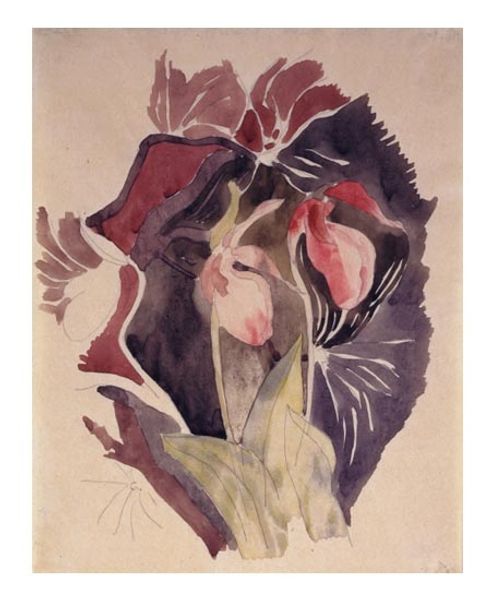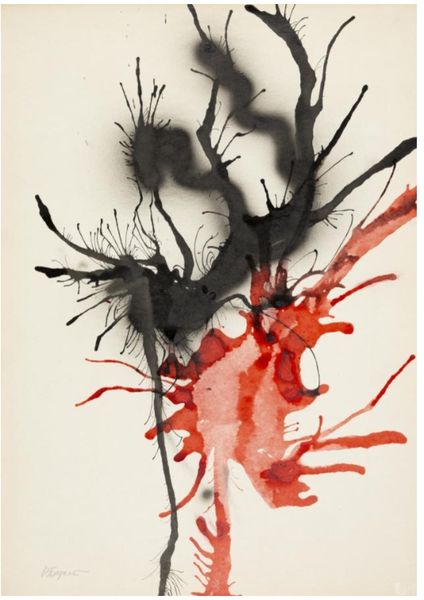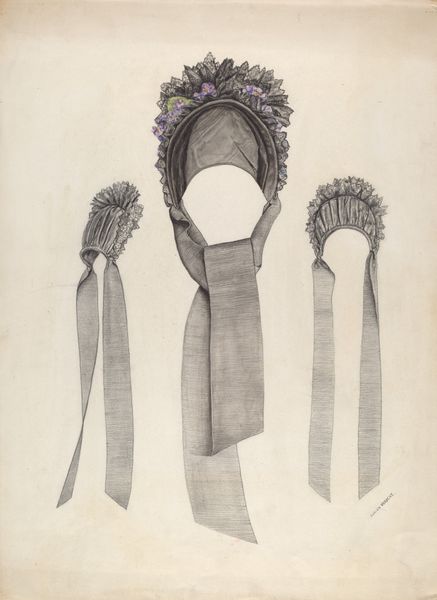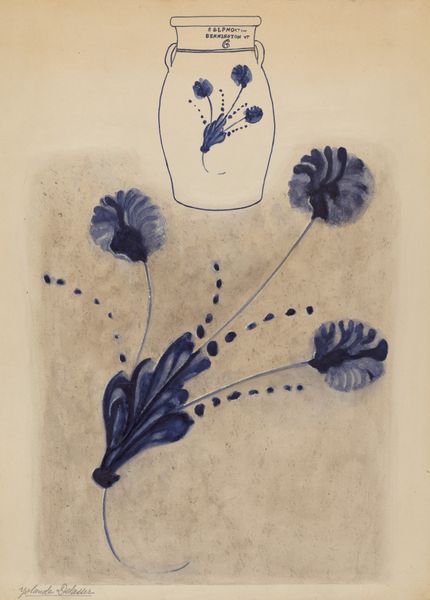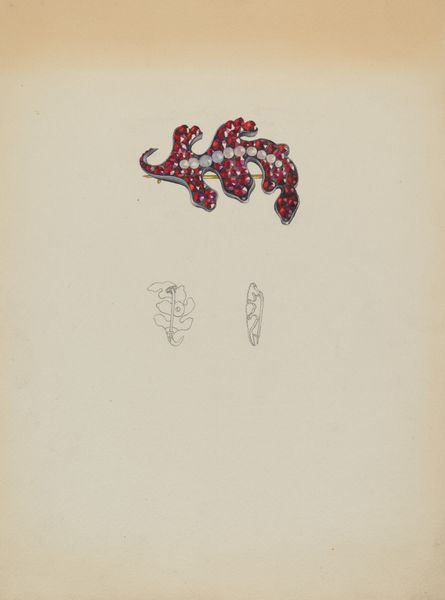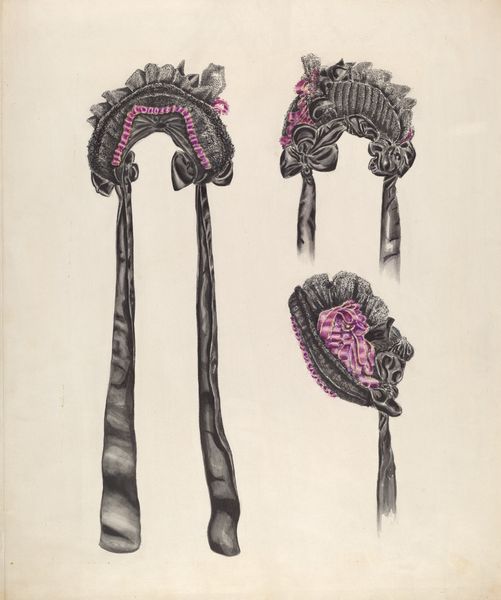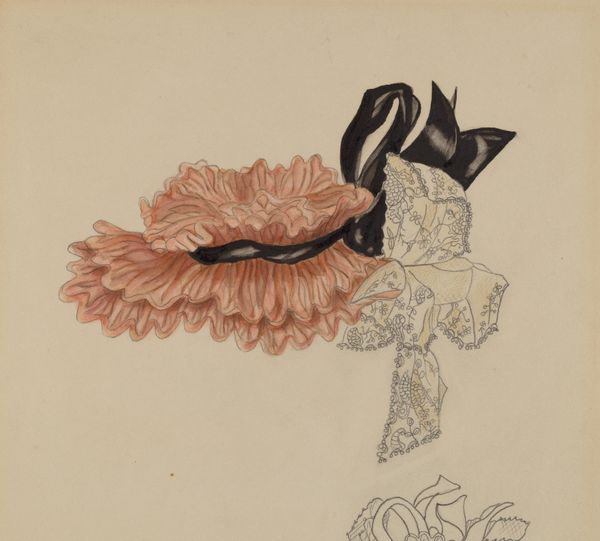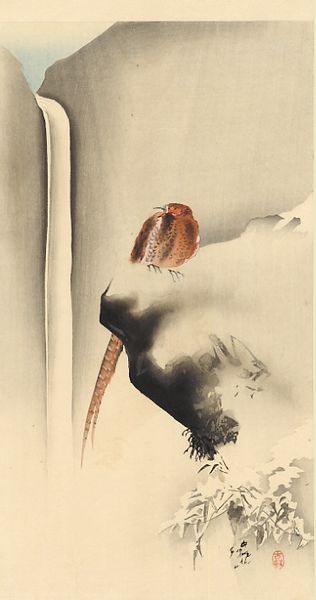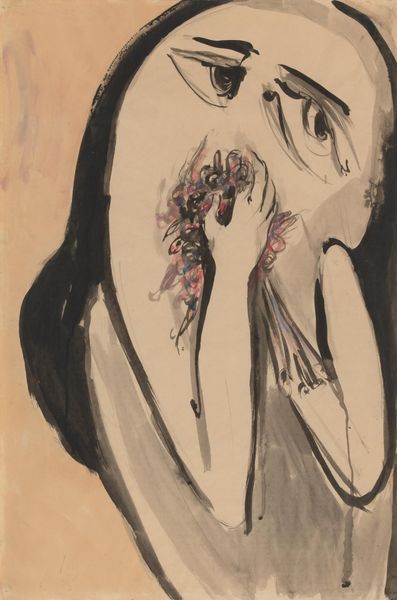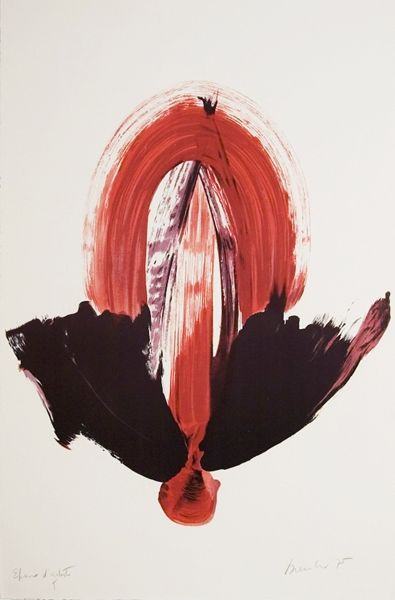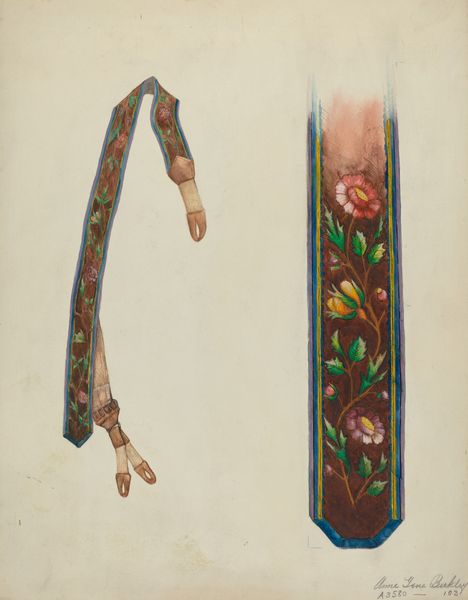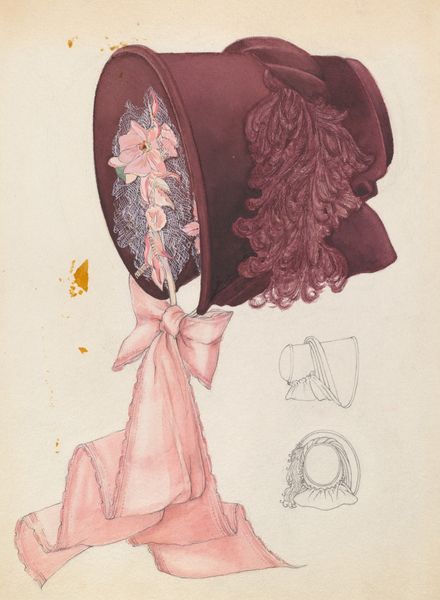
drawing, mixed-media, paper, pencil
#
pencil drawn
#
drawing
#
imaginative character sketch
#
mixed-media
#
light pencil work
#
quirky sketch
#
pencil sketch
#
paper
#
personal sketchbook
#
pencil
#
sketchbook drawing
#
watercolour illustration
#
sketchbook art
#
fantasy sketch
Dimensions: overall: 46 x 35 cm (18 1/8 x 13 3/4 in.)
Copyright: National Gallery of Art: CC0 1.0
Curator: Lillian Causey's "Bonnet," dating from around 1937. It's a mixed-media drawing that features pencil and what seems to be watercolor on paper. Editor: My first impression is that it's simultaneously delicate and quite severe, that jagged dark lace at the top contrasts with the flowing ribbons. It evokes a very particular kind of female labor. Curator: I agree, there's a distinct tension present. If we think about bonnets historically, they signify modesty, domesticity, often a sign of enforced womanhood. This piece troubles that narrative though. It feels almost like a rebellious or surreal take. Editor: Absolutely, consider the material aspect of the bonnet itself. Lace making, flower arrangement for embellishment - these were intensely skilled but often unacknowledged forms of labor, largely performed by women within specific social and economic classes. And now are copied by machines and available widely. Curator: Precisely. The act of rendering it in art is important, a material investigation as much as it's an aesthetic exercise. Causey draws our attention not just to the object but to its history and to the lives it touched. Think about how fashion becomes intrinsically linked to social hierarchy and constraints, and resistance, right? Editor: It really encourages considering all stages, from the raw materials to its construction to its purpose and disposal. It's also worth noting how Causey uses these media, that deliberate looseness gives the piece a life and spontaneity, rescuing it from mere documentation. Curator: Yes, its style transcends mere visual record, almost feeling autobiographical and invites questions about class and social constraints placed on gender expression and craftwork. The bonnet then almost morphs from adornment into armour. Editor: And even now, you could recreate an imitation bonnet easily - how do these types of reproduction influence our access to the lives involved with that labor? That contrast with craft informs meaning now as well. Curator: Reflecting on “Bonnet” then it challenges us to look beyond surface adornment, finding a deeper context of women's roles within cultural history through close study. Editor: Agreed. Causey has created space here to ruminate upon historical craft practices in intersection with contemporary meaning making in surprising ways.
Comments
No comments
Be the first to comment and join the conversation on the ultimate creative platform.
